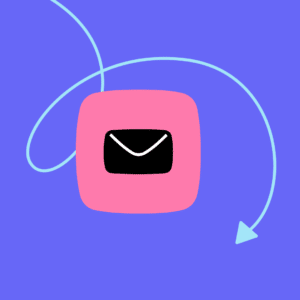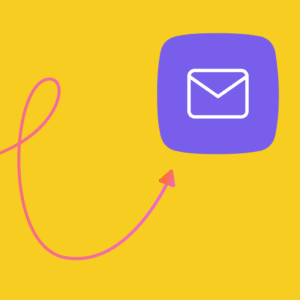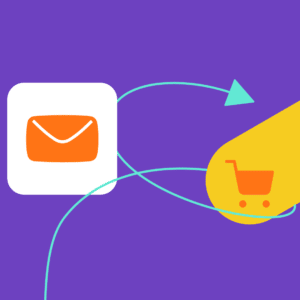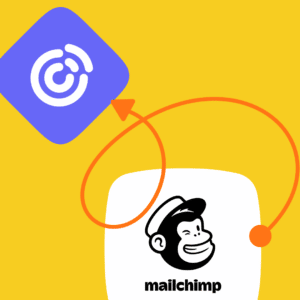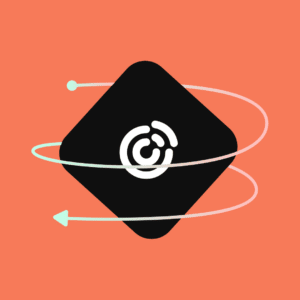How to Setup an Email Nurture Campaign to Keep Customers Engaged


Written by Ashlyn Brooks
March 25, 2022
Building a good client relationship is crucial to business growth and scaling. You put in the time and effort to find a target audience, who you cater to with your innovative products and services before pulling the “big ask” with an opt-in of some kind. But the work doesn’t stop there. Next, you need a stream of creative and valuable email campaigns to convert a one-time subscriber into a lifetime buyer.
What is email nurturing?
Email nurturing is what happens (or should happen) after you draw in your subscriber with your lead magnet. For example, say you used Instagram to engage with your followers and offered a freebie for their information (name, email, etc.). The freebie you offered would be known as your lead magnet, as it led them to subscribe to your newsletter or another email opt-in. What comes next is nurturing.
Email nurturing is the process of setting up a series of emails, in advance, with the ultimate goal of growing a trusting relationship with your subscriber. These types of emails could include educational materials and basically anything that adds value to your reader and helps nurture their trust in your brand.
There are several steps to take in accomplishing this:
- Focus on your target audience
- Provide value
- Set your timeline
- Develop your flow
- Measure results and adjust accordingly
Focus on your target audience
Focusing on your target audience may seem like a no-brainer, but when you really dive into the concept it can get confusing if you don’t have a plan in place. Assuming you, as a business owner, offer more than one lead magnet or freebie in your lifetime, you probably also have more than one target audience to reach.
For example, if you used a personal finance lead magnet like a budgeting tracker for one freebie, and then later used a small business starter kit as another, you’d then have two different streams of target audiences to appeal to—one that’s interested in personal finance and another that needs small business advice. The bottom line is, you don’t want to feed one and starve the other. You need to split those opt-ins into two different nurturing campaigns that build trust, with you being the wise professional leading the charge. This process is called segmentation.
Through tools like ManyChat you can:
- Engage with your audience
- Collect subscriber information
- Deliver your lead magnet
- Filter through who opted in for which lead magnet
- Build a nurturing campaign based on your result
Provide value
We all have email accounts (some of us multiple ones), and we all know the annoyance of having a cluttered and overpopulated inbox filled with nonsense that delivers no value but asks for a lot. Don’t be that business owner.
Instead, try with each and every email series to dig deep into your audience’s pain points, offering insightful information or answering a question. Here are a few tips to accomplish this:
- Put out a survey to see what your audience needs
- Find out what’s trending in your niche to discover new ideas
- Develop content you wished you’d had when you were starting your journey
Remember, while a bulk of your content will be driving your subscribers to make a purchase, share your work, or start a trial, not all of it will be asking for anything. Some of your content should be about building a relationship with your subscriber.
Set your timeline
You don’t want your email campaign to last so long that you lose your subscriber’s interest, but you also want to keep them hanging for a bit so they continue reading. This is where setting a timeline comes in.
For example, one business owner developed a Bootcamp-style email campaign, where each day they would release new information and new content, but also include a cliffhanger to make sure the reader opened up the next email.
Try and find a balance between being memorable and being pushy. Also, keep in mind that your subscriber is at their peak purchasing point right after they sign up for your lead magnet.
Develop a flow
Arguably, one of the most difficult decisions to make when it comes to your email campaign is how to structure the whole project. In the beginning, you’ll want to create a map that helps you visualize what your email flow will look like. For example:
Email 1: A thank you to the subscriber for their opt-in, featuring the lead magnet you promised.
Email 2: Your latest article or link to your new “subscriber-only” content.
Email 3: 10 things every new business owner should know to succeed.
Email 4: Introduction to your new video course on starting a new business.
Email 5: An offer for a 24-hour discount on your new video course.
The main things you want to do with your campaign are:
- Give value
- Mix up the flow to keep the reader coming back
- Provide information followed by incentive
Also, don’t forget to space out your emails accordingly. Setting up a sequence of eight emails over the course of a month is plenty.
Measure results
The best part of using most email marketing is that each service provider, whichever one you use, offers its own set of diagnostics and trackers to measure how each email campaign performs. This includes:
- Open rates
- CTA follow-throughs
- Unsubscribers and opt-outs
- Devices used
- Domains and locations
This is all pertinent information when doing A/B testing and comparing how one campaign performs over another. The important aspects to focus on are:
- Where are you losing your audience?
- Where are you gaining more opens and click-throughs?
- Which products are outperforming others?
- Which timelines are better than others?
Email nurturing for a booming business
A well-created email campaign can yield a tremendous amount of subscribers, opt-ins, and purchases, if done correctly. While a great email campaign takes time to develop, following the tips we’ve laid out can help you set a strong foundation for growth. Some other things to keep in mind are:
- Have a great lead magnet in place.
- Don’t “set it and forget it.”
- Just because a person opts-in doesn’t make them prime for purchasing just yet.
For more information on creating better email campaigns, you can read our article Email Marketing Best Practices to Improve Your Campaigns.
Ready to try ManyChat?!


